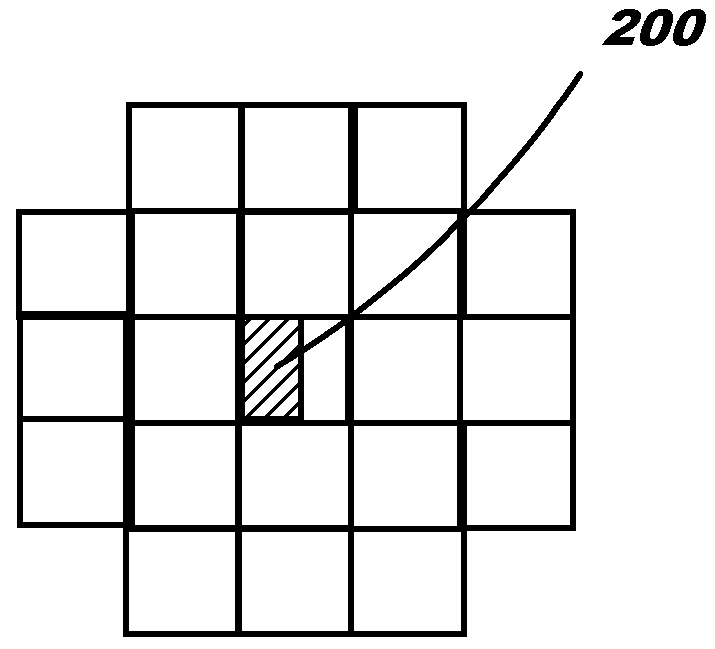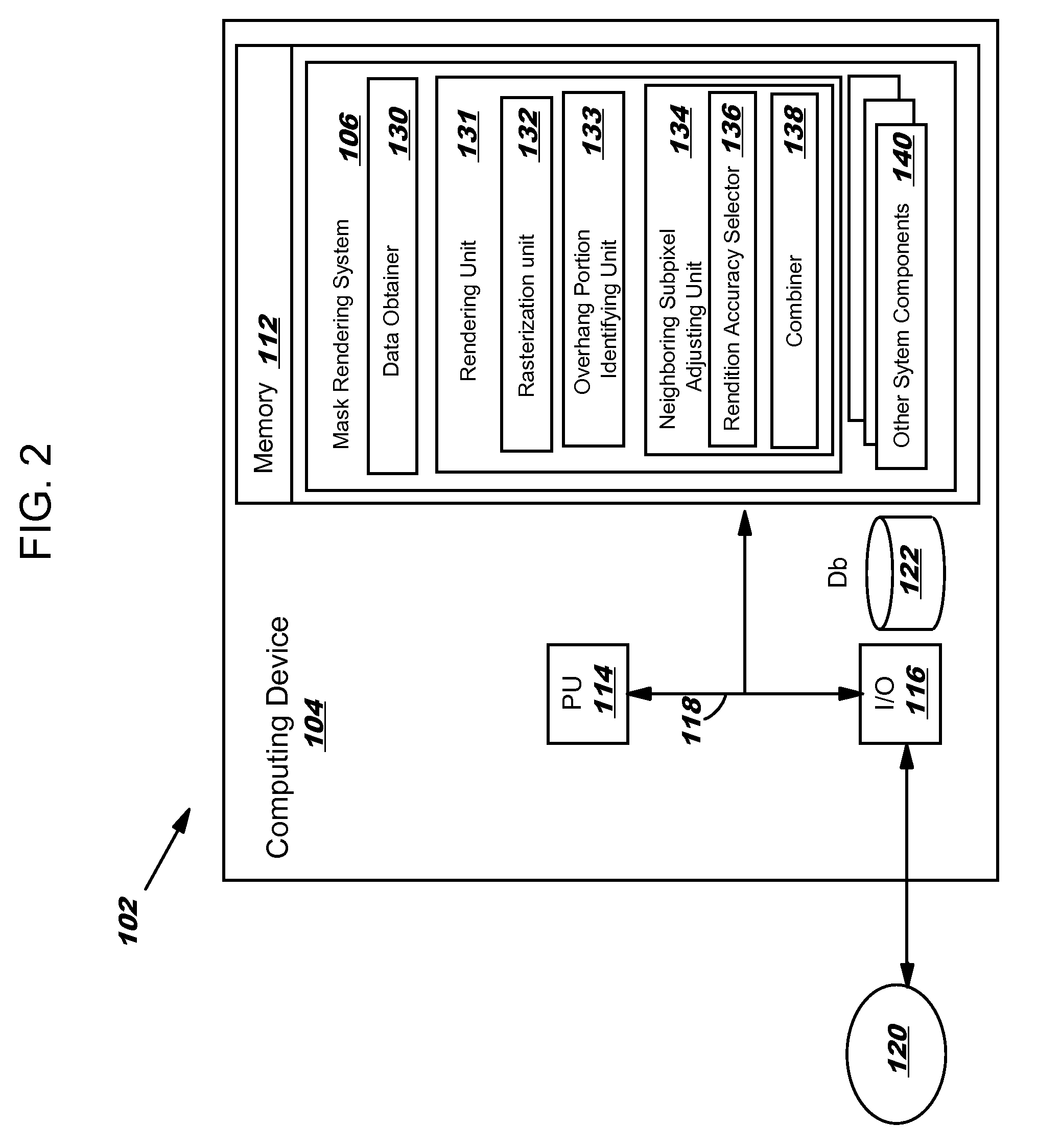Rendering a mask using coarse mask representation
a mask and representation technology, applied in the field of integrated circuit (ic) fabrication, can solve the problems of inability to accurately represent polygons in bed of nails, inability to reduce output grid density, and inability to achieve the effect of reducing the density of output grids
- Summary
- Abstract
- Description
- Claims
- Application Information
AI Technical Summary
Problems solved by technology
Method used
Image
Examples
Embodiment Construction
[0040]The description includes the following headings for illustrative purposes only: I. Introduction and Definitions, II. System Overview, III. Operational Methodology, and IV. Conclusion.
I. INTRODUCTION AND DEFINITIONS
[0041]The current disclosure is based on, among others, an understanding that an image produced by a projection lens may be affected by the impulse response of the projection lens and the mutual coherence function of the illumination. It can be achieved that a simulated image of the mask matches an actual image produced by the projection lens without modeling the mask by representing the fine-structure of the mask. Specifically, rather than attempting to reproduce the fine-structure of a mask as accurately as possible in a simulation, the current disclosure constructs a coarse representation of the mask that has approximately the same Fourier transforms (FT) as the mask if both are bandlimited by the impulse response of a pseudo lens with a numerical aperture larger ...
PUM
 Login to View More
Login to View More Abstract
Description
Claims
Application Information
 Login to View More
Login to View More - R&D
- Intellectual Property
- Life Sciences
- Materials
- Tech Scout
- Unparalleled Data Quality
- Higher Quality Content
- 60% Fewer Hallucinations
Browse by: Latest US Patents, China's latest patents, Technical Efficacy Thesaurus, Application Domain, Technology Topic, Popular Technical Reports.
© 2025 PatSnap. All rights reserved.Legal|Privacy policy|Modern Slavery Act Transparency Statement|Sitemap|About US| Contact US: help@patsnap.com



